Red Clover
By Mike on Tuesday, June 4, 2013, 22:34 - Permalink
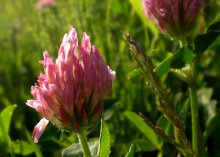 04 June 2013 - We took a pleasant evening stroll along footpaths through some local fields and picked some early flowers of Red Clover to make Red Clover Syrup.
04 June 2013 - We took a pleasant evening stroll along footpaths through some local fields and picked some early flowers of Red Clover to make Red Clover Syrup.
What Is Red Clover?
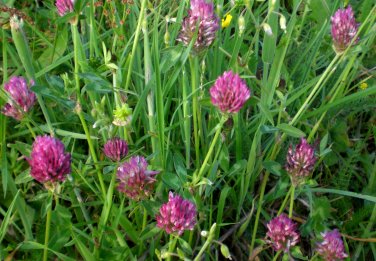 Trifolium pratense - a sprawling, sometimes slightly bushy herbaceous perennial, instantly recognisable by its globular clusters of flowers ranging in colour anywhere from from baby pink to deep magenta.
Trifolium pratense - a sprawling, sometimes slightly bushy herbaceous perennial, instantly recognisable by its globular clusters of flowers ranging in colour anywhere from from baby pink to deep magenta.

The trefoil leaves are dark green with a paler green chevron marking and are borne on the end of slender, slightly wiry stalks - unlike some other species of clover, the leaflets of red clover are somewhat pointed.
Red Clover is commonly found on roadsides, amongst long grass and at the edges of cultivated fields. It tends not to thrive in lawns, where white clover (a more compact, mat-forming plant) is more common.
Making Red Clover Syrup
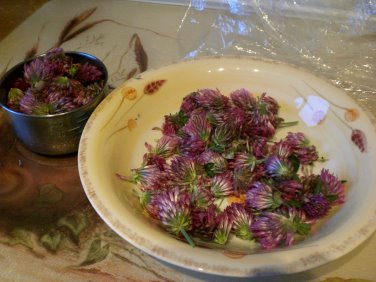 Red Clover syrup is easy to make - pick a good quantity of the flowers on a dry, sunny day (when the plant will be producing plenty of nectar) - pull off any excess stalk and leaves as you go, as this will make handling simpler back in the kitchen.
Red Clover syrup is easy to make - pick a good quantity of the flowers on a dry, sunny day (when the plant will be producing plenty of nectar) - pull off any excess stalk and leaves as you go, as this will make handling simpler back in the kitchen.
Back at home, spread the flowers out on a tray or dish and pick out any foreign bodies, leaves, insects etc and pack them fairly firmly, but without crushing, into a container to get a measure of their volume - I had about a cup and a half, when packed down.
 Whatever volume of flowers you have, put the same volume of water in a pan and bring to the boil.
Whatever volume of flowers you have, put the same volume of water in a pan and bring to the boil.
Drop in the flowers, then reduce the heat and simmer very gently for just a couple of minutes, then remove the pan from the heat.
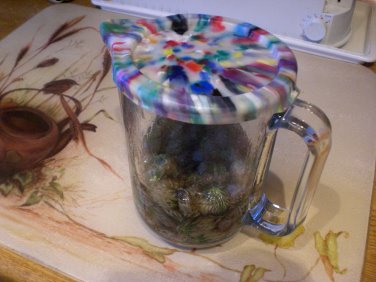 Transfer to a jug or bowl and cover up with a lid or plastic film.
Transfer to a jug or bowl and cover up with a lid or plastic film.
Allow to cool, then place in the fridge overnight to infuse.
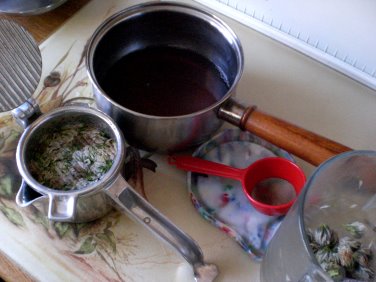 The following day, strain off the liquid into a pan. Squeeze the flowers in a cloth jelly bag or by pressing between two plates (or as I did, using a citrus juice press).
The following day, strain off the liquid into a pan. Squeeze the flowers in a cloth jelly bag or by pressing between two plates (or as I did, using a citrus juice press).
Make sure you have strained out all the little bits of flower, as these would spoil the appearance of the finished syrup.
At this stage, the liquid smells quite unpromising - not unpleasant - just green/grassy and not very fragrant. Don't worry about this - it gets better.
 Place the pan on a gentle heat and add sugar - the same volume of white granulated sugar as flowers and water the previous day (so in my case, a cup and a half).
Place the pan on a gentle heat and add sugar - the same volume of white granulated sugar as flowers and water the previous day (so in my case, a cup and a half).
Heat gently, stirring in the sugar until it is all dissolved.
 Once the sugar is completely dissolved, turn up the heat and boil hard without further stirring, and without a lid on the pan.
Once the sugar is completely dissolved, turn up the heat and boil hard without further stirring, and without a lid on the pan.
Check the temperature periodically using a cooking thermometer - keep boiling until the temperature reaches 110 Celsius (230F).
(If you don't have a suitable thermometer, chill a plate in the fridge and use this to test the thickness of the syrup - drip some onto the plate and allow it to cool down, then run your finger across it to gauge how sticky/thick it's getting - aim for something around the same consistency as maple syrup.
I found it took about ten minutes of hard boiling before it reached the right consistency.
Pour the boiled syrup into clean, sterilised jars and cap them immediately.
The Result
Red Clover syrup is a beautiful clear, deep rose colour.
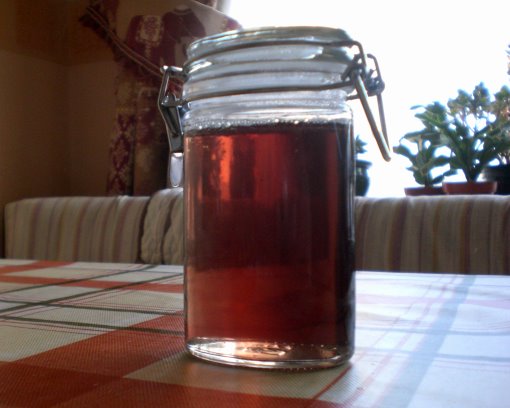
Clover Syrup
Red Clover syrup has a pleasant, mildly floral-fruity flavour - a little bit reminiscent of honey, but with a gentle astringency that makes it ideal for combining with things that are already sweet, without ruining them by making them cloying.
It's suitable for pouring over ice cream or waffles, or adding to fruit salads, or it can be added to sparking water to make a refreshing soft drink.
